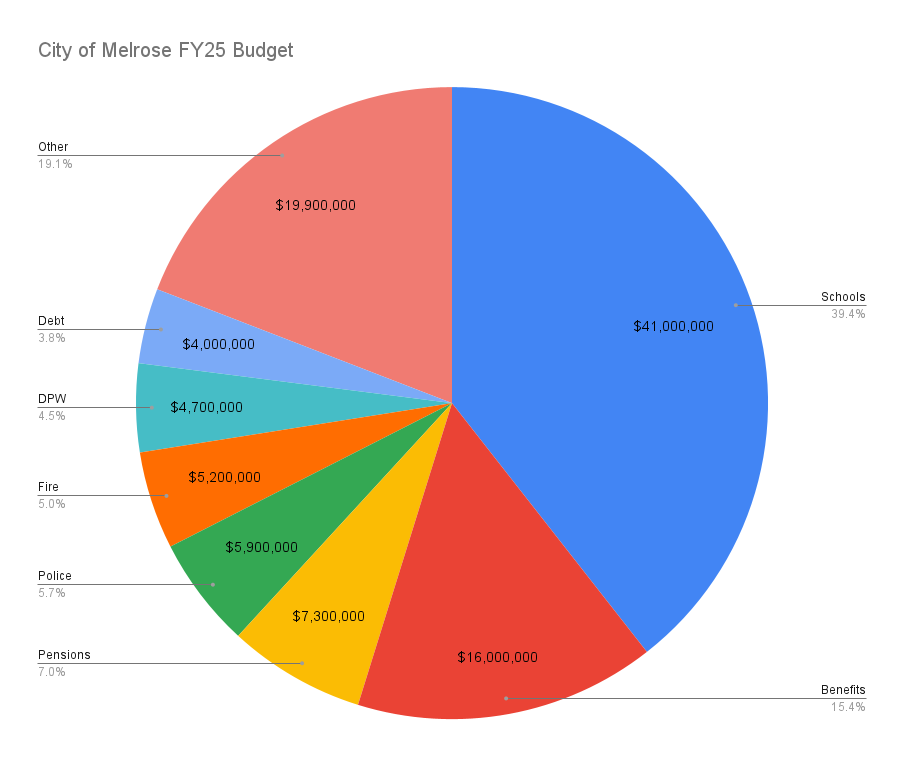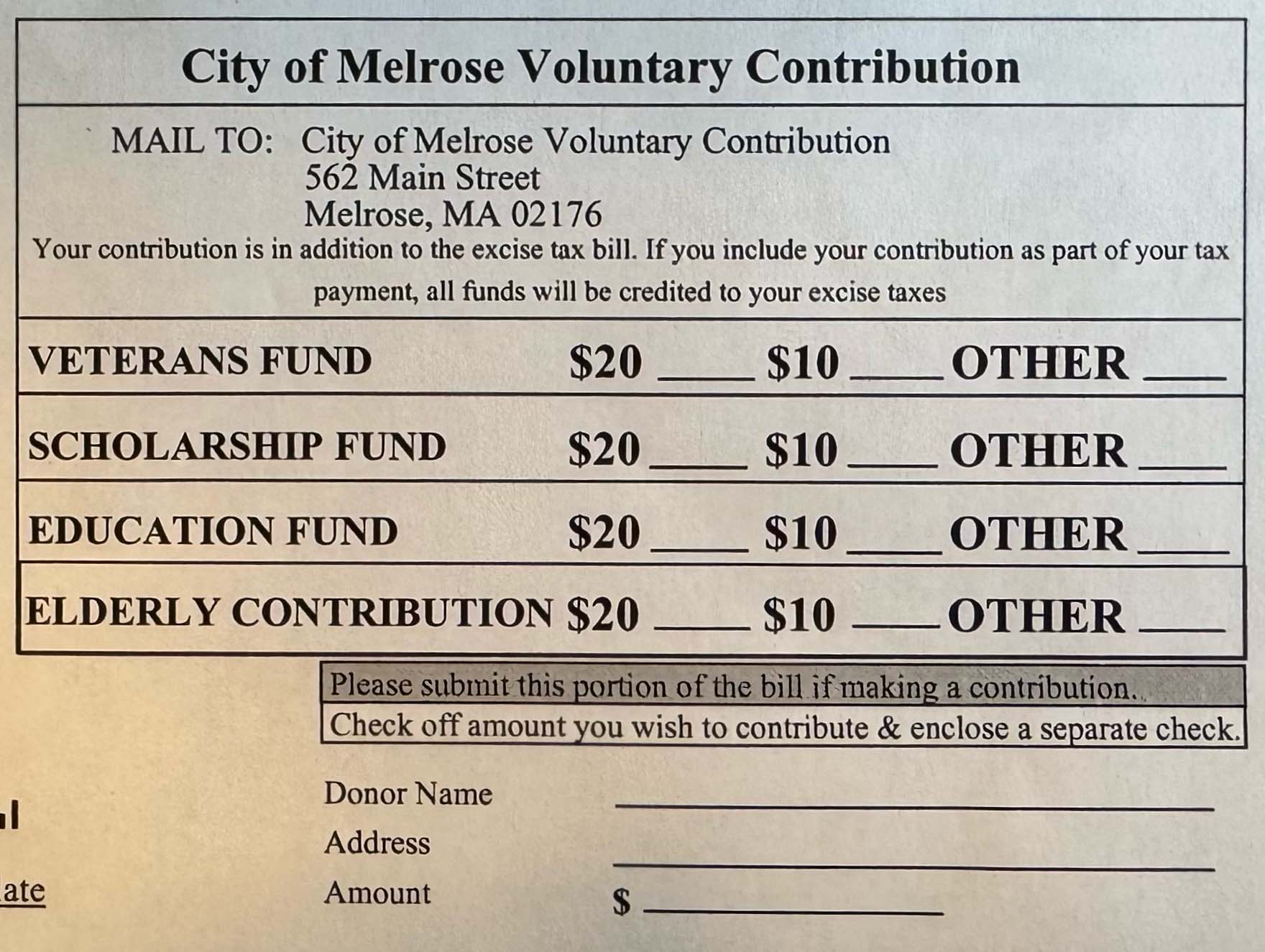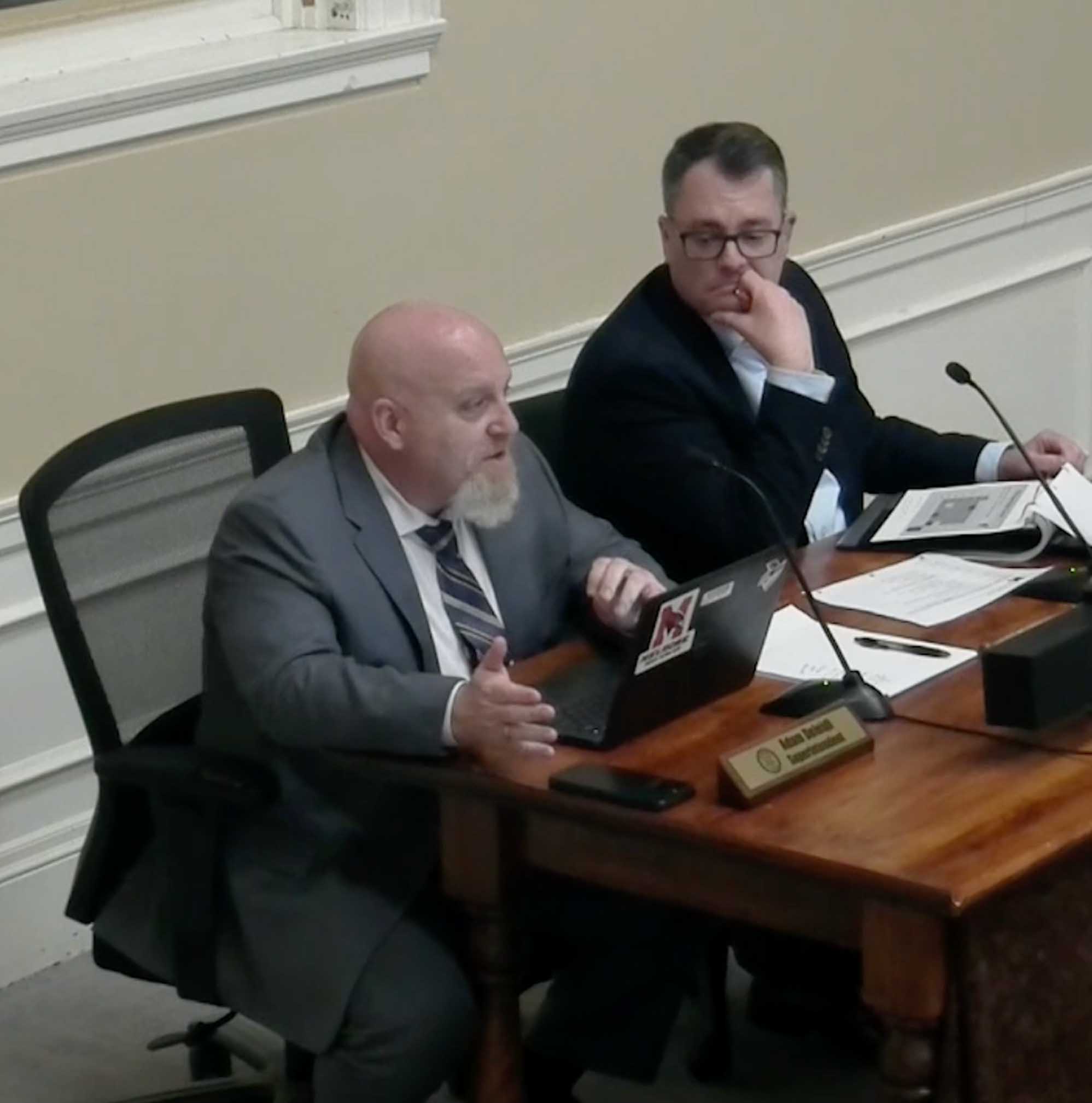Mayor Aims To “Pull Every Lever” To Lessen Cuts For Schools and City
By Ellen Putnam

Mayor Grigoraitis speaking at last week's City Council meeting
Screenshot from MMTV
In their most recent meetings, the City Council and the School Committee each received updates from Mayor Jen Grigoraitis on the process of setting the city’s budget for Fiscal Year 2026 (FY26), which begins in July.
Last month, it was announced that the City of Melrose and the Melrose Public Schools (MPS) are facing a combined $6.1 million deficit for FY26. This is due to rising costs in a number of areas, including health insurance, special education, utilities, and transportation. The city's total budget in FY25 is $104.1 million.
Superintendent Adam Deleidi has already presented proposed budget cuts totalling $4 million in the MPS budget. This includes eliminating five administrator positions and 33 teacher positions, which will result in larger class sizes throughout the district.
Mayor Grigoraitis is currently developing a city budget that will incorporate the remaining $2.1 million of budget cuts. She is expected to present this budget in early May to the City Council, which will hear from each department individually before voting on the budget as a whole.
It was initially announced that the MPS deficit would be $4.2 million and the remaining deficit on the city side of the budget would be $1.9 million. However, the mayor announced this week, “Given how little is left that can feasibly be reduced from the school budget, please be aware that I have informed the Superintendent that no further cuts are needed; the City will absorb the remaining shortfall on its side of the ledger.”
Mayor Grigoraitis has shared that it will be challenging to find $2.1 million worth of cuts on the city side of the budget.

Segments of the City of Melrose budget for FY25
Note: The figure for Schools does not include offsets (fees, tuition, etc, collected by MPS), which are kept in the MPS budget. The total budget for MPS in FY25 was $47 million.
In addition to $42 million in the city budget's line item for the schools, there is an additional $20 million of school-related costs that is housed on the city site of the budget, including school nurses, employee benefits, custodial staff, utilities, school resource officers, and building insurance.
Many expenses on the city side of the budget, including some of those connected to the schools, cannot be reduced due to legal and contractual obligations.
And cutting some costs could potentially backfire. Mayor Grigoraitis noted, “If we eliminated the library - if we never opened the doors next year - then it would save us $1 million in staff costs,” which, she noted, would not close even half of the deficit on the city side. “A few people in the community said that’s a great idea,” Grigoraitis went on, “which I don’t personally agree with. But it’s more complicated than that, because if we didn’t open the library next year, then the state would come to us and say, ‘That’s really disappointing. Please pay back the grant that we gave you to do your library renovation,’ which would actually put us even deeper in the hole.”
City Councilor Mark Garipay pointed out that the city will also need to pay unemployment benefits for any employees who are laid off, which will reduce the savings the city will receive from each employee who is let go.
Mayor Grigoraitis shared that she is speaking with the state delegation (State Senator Jason Lewis and State Representative Kate Lipper Garabedian) to see if they can increase the amount of state aid Melrose will receive next year. However, “things on the state side are not great,” the mayor said.
“We have to hope the federal government doesn’t slash Medicaid,” added School Committee member Seamus Kelley, “because if that happens, then kiss the state’s budget goodbye.”
What is Free Cash?
Free cash is essentially what is left over from the previous fiscal year's budget. The state's Division of Local Services (DLS) recommends that municipalities plan to generate five to seven percent of their total budget in free cash. DLS states that, “As a nonrecurring revenue source, free cash should be restricted to paying one-time expenditures, funding capital projects, or replenishing other reserves.” The amount of free cash a municipality generates can affect its bond rating, which will be especially important for the $130 million public safety buildings project that is currently in progress.
What are Stabilization Funds?
Stabilization funds are essentially savings accounts the city maintains for specific purposes. Melrose has seven stabilization funds, including the Special Education Stabilization Fund, which is intended for special education-related expenses that exceed the amount set out in the school budget. Bond rating agencies also look at a city's stabilization fund balances to determine its bond rating.
While the city has a limited ability to plan for changes in federal funding, Mayor Grigoraitis did indicate that she is looking at contingencies related to the approximately $2 million MPS receives annually in federal education grants. This includes adding to the Special Education Stabilization Fund, she said, which currently has a balance of just over $750,000, “so we can attempt to provide the district with some protection from a claw back and/or reduction of federal funds in future years.” Adding to the fund would likely be done through free cash.
Last year, Mayor Grigoraitis ended the practice of funding part of the schools’ operating budget through free cash. However, she suggested that the Superintendent could submit one-time, non-personnel expenses from the FY26 budget, such as Chromebook expenses, to the City Council for distribution from free cash. Using free cash for the computer replacement and maintenance line item, for example, would free up $225,000 that could be used for additional staff.
“We’re out of Chromebooks,” Superintendent Deleidi pointed out, “and we’re also out of teacher devices. The device I’m on right now is on its last legs. If it dies tonight, your superintendent won’t have a computer tomorrow.”
The School Committee may vote at their next meeting on whether to increase next year's fees for athletics, after school care, and preschool - potentially as much as 25% for some fees. “I want to acknowledge that increasing fees is not something I’m looking forward to,” said School Committee Chair Dorie Withey, “We’re consistently asking families to pay for additional things. But we’re in a hard spot in the budget.”
The city will also be looking at raising fees, potentially for anything from recreation programs to hall rentals to building permits to liquor licenses. And they will offer a voluntary opt-out program for city retirees who are not yet eligible for Medicare. “I was surprised at the number of relatively young folks taking full retiree benefits,” said Mayor Grigoriatis, “and it’s a significant cost to the city. We’ll offer a small financial incentive to see if any will opt out.”
“None of these steps will close the budget gap,” the mayor continued, “but I do think we need to be pulling every lever that we can.”

A voluntary contribution box for funds, including the Education Fund, appears on excise and property tax forms. Donations can also be made online.
Mayor Grigoraitis also recently began filling positions on the Education Fund Committee, which is responsible for managing the Melrose Education Fund (not to be confused with the Melrose Education Foundation). The Education Fund is funded entirely through voluntary contributions, and has a balance of over $15,000 that has been donated over the 22 years it has existed.
Community members have brought up the idea of making voluntary contributions to the schools in lieu of a successful property tax override vote.
Under state law, the Education Fund can “provide supplemental educational funding,” although the mayor stated, “The law prohibits us from using this fund to pay for recurring costs associated with running schools.” Instead, Mayor Grigoraitis suggested, the fund “could be used for things like technology, or if there’s a desire to pilot curriculum, or a need to supplement uniforms or instruments. $15,000 across a district of 4,000 students will go really quickly.”
She also noted that there are “legal restrictions around public employees doing active fundraising. We can let folks know the fund exists and then if people choose to donate, we can disseminate that funding.”

Superintendent Adam Deleidi, left, and School Committee member Seamus Kelley
While neither the Superintendent nor any School Committee members were optimistic about the cuts on the school side, they acknowledged that worse outcomes seem to have been avoided so far.
“We are going to be looking at larger class sizes, but still under 30,” said Superintendent Deleidi. “I do believe that, in cutting $4 million, to keep class sizes under 30 across the district - I know that’s higher than what we’re used to, but to me, that is quite a miracle.”
Based on current kindergarten registration numbers, kindergarten class sizes would be at 22 students per class, “but that assumes no more new registrations,” said Deleidi. “It’s a difficult thing to navigate, since we want to be able to consider bringing a kindergarten teacher back online if there are funds. School placements are soon, so we have to make that decision soon.”
Some of the mayor’s proposals, said Superintendent Deleidi, “would give us a little wiggle room to perhaps bring something back. We’d have to figure out what would be best there.”
“This doesn’t mean we now have money to do new and exciting things,” cautioned School Committee member Margaret Driscoll. “It just means we might get to do a few less really bad things.”

Follow Us: